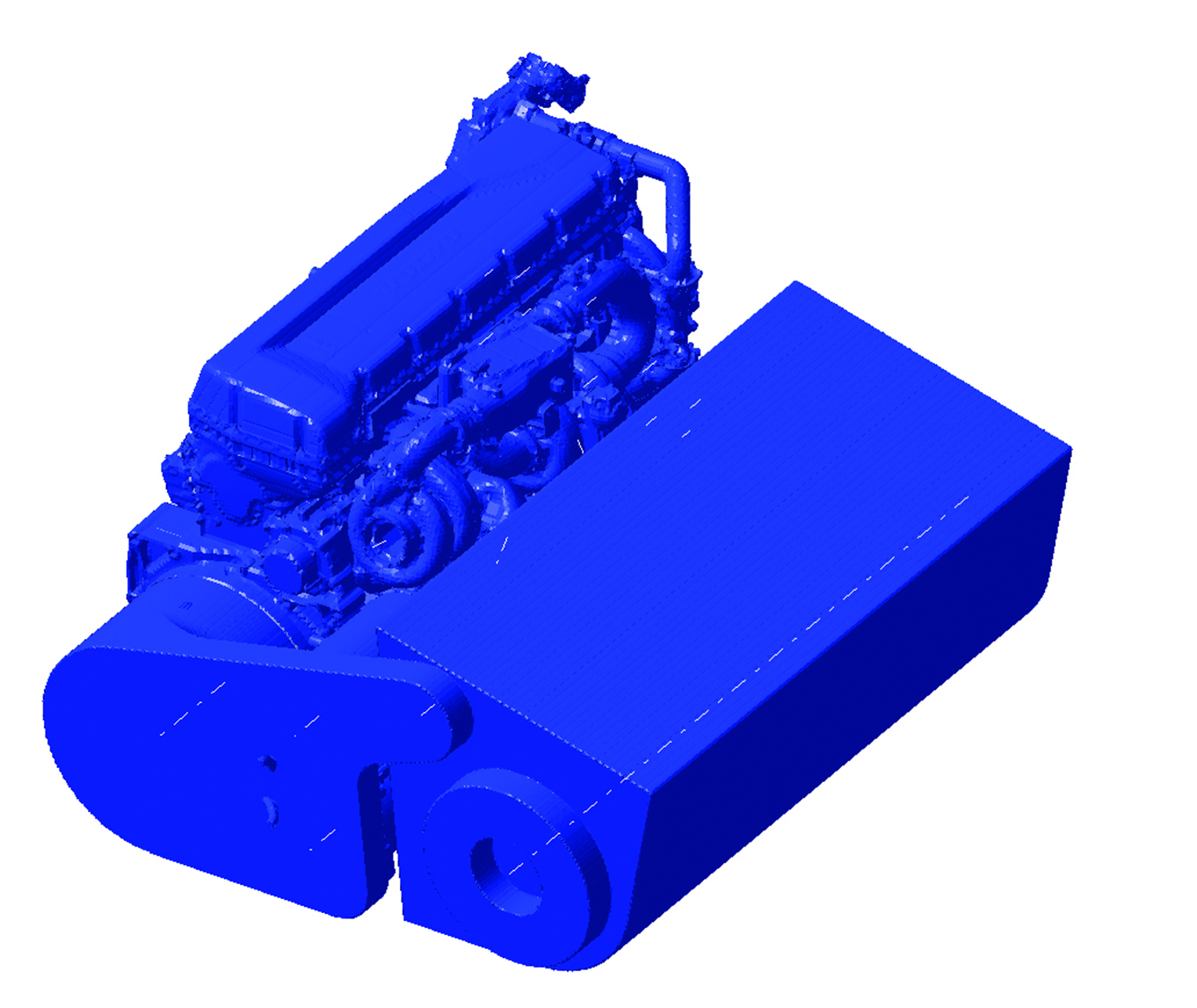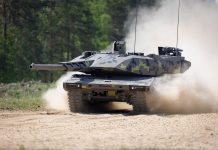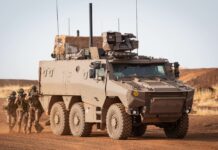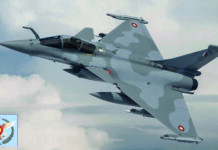If you want to look at a transformative technology then the Internal Combustion Engine (ICE) certainly fits that description. The petrol engine started to become a viable proposition in the 1870s, while in 1886 Karl Benz began commercial production of a motor vehicle equipped with an ICE. In the 1890s, Rudolf Diesel developed a reliable diesel engine and the basis for a technological revolution was established.
Legacy Propulsion
At that time, the world had entered the oil age and this would have immense strategic implications. In the early years of the twentieth century, Britain’s Royal Navy, then the largest and most important navy in the world, took a critical decision when it decided that its major units would use oil rather than coal as fuel. Winston Churchill, as First Lord of the Admiralty, and effectively the civilian head of the Royal Navy, was convinced that oil offered much more energy efficiency than coal and that this would translate into major operational gains. This was a courageous move as Britain had immense coal reserves, but no oil access at home. However, across its empire and area of control, oil strikes were starting to be made. The British were not the only navy to turn to oil, with the US Navy and Italy, inter alia, soon following suit.
The ICE essentially made aviation a reality, and as performance increased and cost decreased, a mass market for the motor car started to become feasible, especially with Henry Ford leading the trend with the manufacture of the ‘Model T’ in 1908. In parallel came trucks and buses, heralding the dawn of a whole new era of mobility. The ICE would transform warfare just as it would transform society.
Importance of Oil
Industrial age economies were built upon oil and other fossil fuels; they provide the power both for manufacturing and for the heat and light central to a modern society. Oil was critical to the global economic recovery post-1945, and in many respects, economic growth was due to the fact that oil was plentiful and cheap. It might seem strange today, but at that time there appeared to be a commonly shared assumption, from politicians to government officials, to oil company officials, and shared the general public, that there would always be oil and plenty of it. There were just so many applications for oil, such as nylon and plastics, that it became part of everyday life.
In the wake of the 1973 Arab-Israeli War came the Arab oil embargo, and all of a sudden, the age of cheap and plentiful oil was over; this would have a devastating effect on western economies. Perceptive people would start thinking about how to confront the threat of energy insecurity, while others would take concrete steps to make sure that they had power to keep the lights on and the country running. France would embark on a programme to provide secure electric power via the construction of nuclear power stations, and eventually 70 per cent of French electricity would be generated by nuclear power. France would also find itself able to earn substantial sums via exporting electricity through connectors to other European countries thanks to its nuclear capability.
Moving to the Modern Era
Nuclear power stations offered carbon-free electricity and yet they did not become the dominant source of power in Europe. The reasons for this were the Three Mile Island nuclear accidents in 1979 and Chernobyl in 1986, both of which acted as a catalyst to the anti-nuclear and broader environmental movement which would grow exponentially in the coming years. As an aside, the Fukushima nuclear disaster in March 2011 can be said to have led to the end of nuclear power in Germany and other European countries. That being said, France has stated that it intends to proceed with a new generation of nuclear plants to ensure energy independence.
While there are more references to energy security and energy independence these days, it is clear that energy policy is influenced more by political commitments to fight climate change and to decarbonise national economies. Whether climate-driven energy policies will achieve the results loudly proclaimed by the sponsors of such policies is open to question. Politicians, bureaucrats and so-called elite opinion are all deeply invested in the climate crisis narrative and policy recommendations that follow that narrative are those that will be followed. The result of this is that nations have set themselves the ambitious goal to decarbonise their economies, hence the emphasis on renewables in their energy mix. More changes will be needed though and one area where this change will be felt is with cars and trucks.
The Need for New Sources
According to the EU and other European governments, the age of the ICE-powered vehicle is over. According to the British Government, new cars with petrol or diesel-fuelled ICEs will be banned from sale in the UK from 2030, small diesel-fuelled trucks from 2035, and diesel-fuelled trucks with a weight of over 26 tonnes from 2040 or earlier if possible.
France has already stated that ICE-powered cars would be banned from 2040 onwards, while on the other hand, it is keeping a flexible position on bans regarding other vehicle types. The situation could be changing in Europe though. In July 2021, the European Commission issued proposals that called for a complete ban on the sale of conventional ICE cars within the EU from 2035 onwards. This was not that much of a shock as Volks-
wagen, among others, was reported to have stated that it would stop selling ICE cars in Europe by 2035.
What the EU appears to envisage is that from 2035 onwards, Battery Electric Vehicles (BEV) will dominate the marketplace, but for that to become a reality, it will be necessary to have a massive Europe-wide investment in charging stations. Neither is it clear how these charging systems will be paid for, nor how the electricity grids in many European countries – many already operating at near full capacity – will be able to cope with the increased demands for power. Another negative factor in the shift to BEV, according to the French automotive trade association, is that electric or fuel cell powered cars are less labour intensive to build than conventional ICE vehicles and that many car workers will lose their jobs as a result.
As things stand, then post-2035, in the EU it will only be possible to purchase BEV, Hybrid Electric Vehicles (HEV) and Fuel Cell Electric Vehicles (FCEV). From 2035, the EU will also ban the sale of Plug-in Hybrid Electric Vehicles (PHEV), such as the Toyota Prius for example. It is expected that busses, trucks and other large commercial vehicles will be included in the ban on ICE vehicles in Europe. Despite this, existing ICE powered personal and commercial vehicles will continue to exist in Europe, meaning that the infrastructure to fuel and support these vehicles will continue to exist, although for how long is impossible to predict.
Military Options
With Europe going down the road to decarbonisation and seeking to bring an end to the age of the ICE in Europe, serious challenges will be imposed on European militaries. These challenges come at the same time as many European militaries are starting to subscribe to the ideology of the ‘climate crisis,’ therefore they are on board with the need to decarbonise. However much work has been done on BEV, HEV and FCEV in personal transport applications and in commercial applications, the challenges that military vehicles face are of a different magnitude and it will require considerable thought and investment to develop a post-ICE strategy.
Fortunately, there has been work done on non-ICE solutions for military applications. Some ten years ago in France, a study was conducted by Arquus on the possibilities offered by a VAB armoured vehicle with its ICE replaced by an electric system. It became clear that a BEV armoured vehicle was not the answer. Indeed, an outline objective of an electric vehicle capable of undertaking a three-day mission led to a vehicle in the 25-tonne weight class; of its overall weight, the batteries alone would account for 11 tonnes and such a vehicle would not be able to conduct the desired mission. In the future, perhaps within the next five to ten years, battery performance could have improved to the point where a BEV might be a viable solution for certain military applications.
Specific French Research
Arquus continued its studies into new vehicle engine solutions, helped in this regard by being part of the Volvo Group. Volvo is a major force in the truck business and it was quick to realise that the era of trucks powered by ICE was coming to an end. This was largely due to the fact that seven per cent of global emissions are caused by freight on roads. They now believe that there will be a “historical shift” from ICE to new propulsion types, and Volvo has stated that by 2030, 50% of their trucks will be electric and that by 2040, or perhaps even earlier, 100 per cent of their truck range will be electric.
Arquus benefits immensely from large investments made by Volvo in sustainable engine technologies, as the power requirements of commercial trucks are such that they cover the majority of power requirements in military logistic and armoured vehicles. This allows Arquus to choose from a range of viable mobility solutions and then optimise them to meet the challenges of military applications. The company already has its first hybrid-powered vehicle in the form of the SCARABEE, a 4×4 reconnaissance vehicle developed to meet evolving French Army requirements in this category.
In France, there is interest in exploring how they can replace the ICE in armoured vehicles with hybrid options. In September 2020, Florence Parly, French Minister of Defence, announced an effort to look into hybrid options for the GRIFFON and VBCI armoured vehicles in service with the French Army. Arquus are currently working with the Direction Générale de l’Armement (DGA) regarding a study on a hybrid propulsion package for the GRIFFON moving towards the integration of a hybrid engine demonstrator with the vehicle. Other French military vehicles could also benefit from hybrid installations, and suggestions in this regard include the JAGUAR reconnaissance vehicle and, as France is looking to acquire a new generation of tactical trucks, these could comprise a hybrid or other non-ICE propulsion solution.
MGCS
One key future programme that will need to embrace a non-ICE propulsion solution is the Main Ground Combat System (MGCS), the next generation tank set to replace the current LEOPARD 2 and LECLERC in Germany and France respectively. Arquus sees MGCS as offering an ideal platform for hybrid propulsion, and they believe they can offer a 60 per cent reduction in fuel consumption and increase operational autonomy by three times in comparison with current generation main battle tanks. Hybrid solutions could also be applied to existing tanks as part of an upgrade programme, as France is already committed to upgrading significant numbers of LECLERC tanks to cover the gap until the arrival of the MGCS. Having analysed the possibilities, Arquus believes that a hybrid installation would significantly enhance the LECLERC’s performance.
Non-ICE mobility solutions for military vehicles will eventually dominate. As we have seen, there are numerous non-ICE solutions that could be utilised, but in so many respects this is still an emerging technology. Batteries have evolved enormously in recent years, yet more work is still needed in order to reduce fire risks, weight, increase power potential and reduce charging times. There has been considerable discussion on hydrogen as a basis for non-ICE power, though there are limitations here, as the equivalent of 400 litres of diesel in hydrogen would be three times the volume and weight, according to one vehicle manufacturer. As for fuel cells, this is still a complicated technology and there are concerns regarding safety of using these cells in tanks, for example.
The last question regarding non-ICE solutions is infrastructure and logistics; supporting military vehicles in non-combat day-to-day operations in Europe, made more complicated during combat operations. Will these new technologies deliver guaranteed performance in a hostile environment? If you deploy to Central Africa for example, will you be able to support your non-ICE vehicles and will they be more of a burden to support than ICE vehicles? Once non-ICE powered vehicles can conclusively demonstrate they have the same or better operational capabilities than ICE powered vehicles, then everybody will be happy. Until that point, considerable doubts will remain over a non-ICE future.












